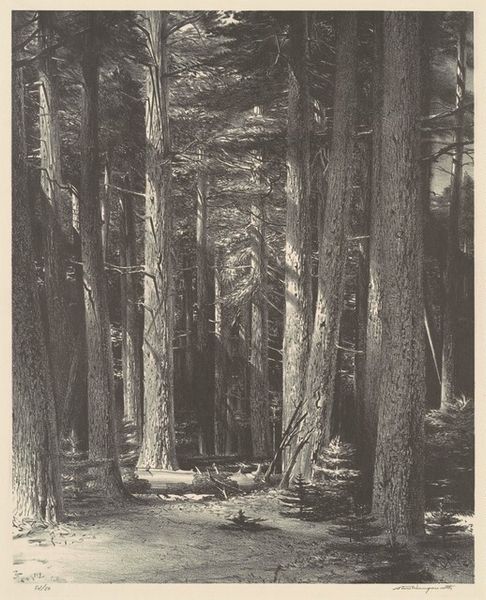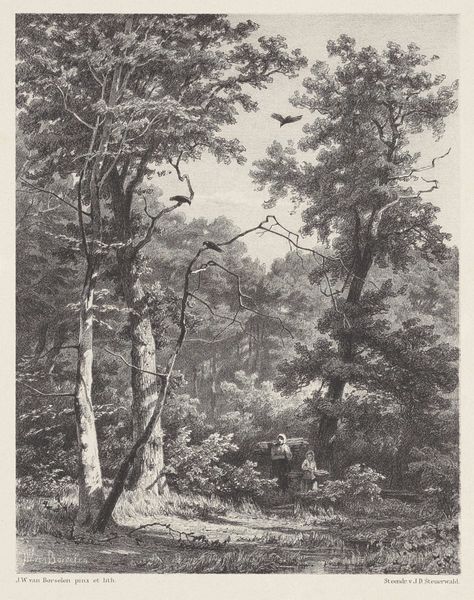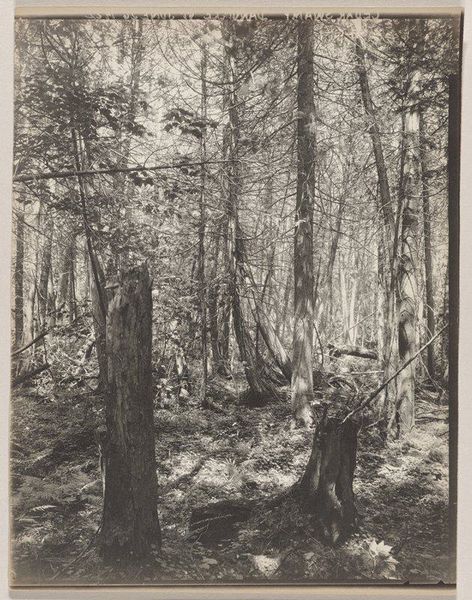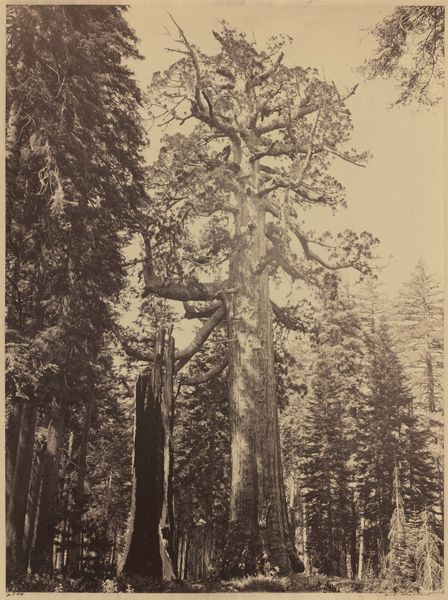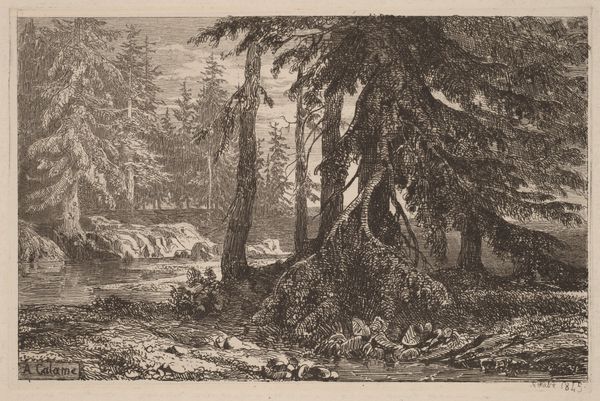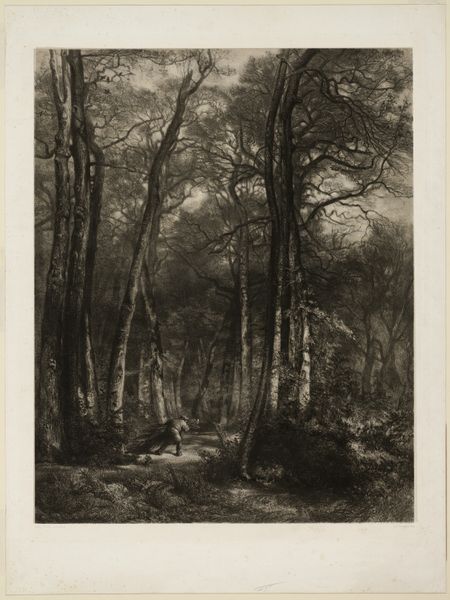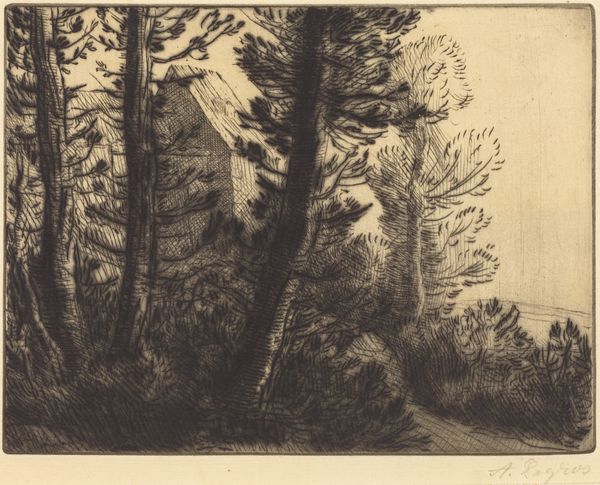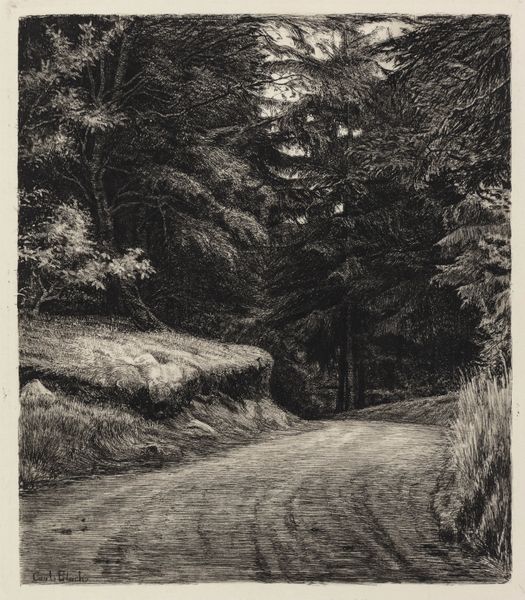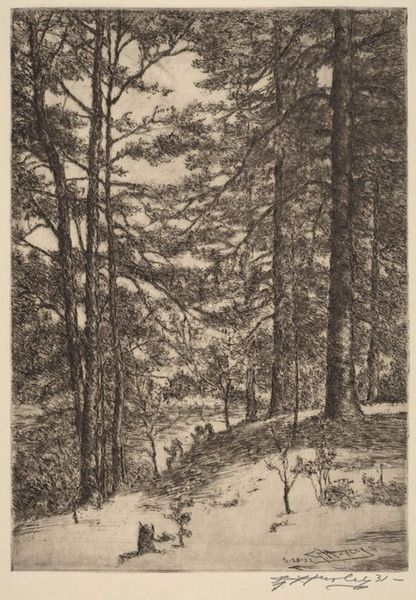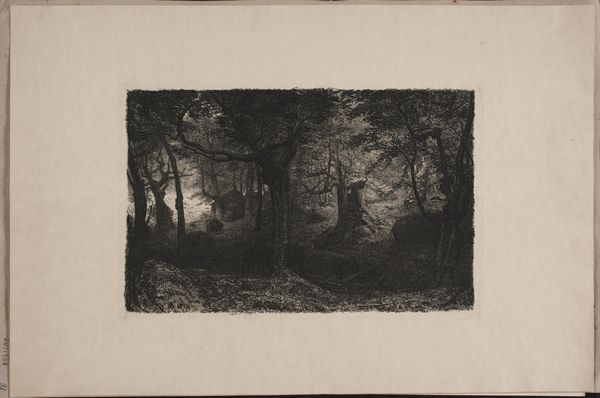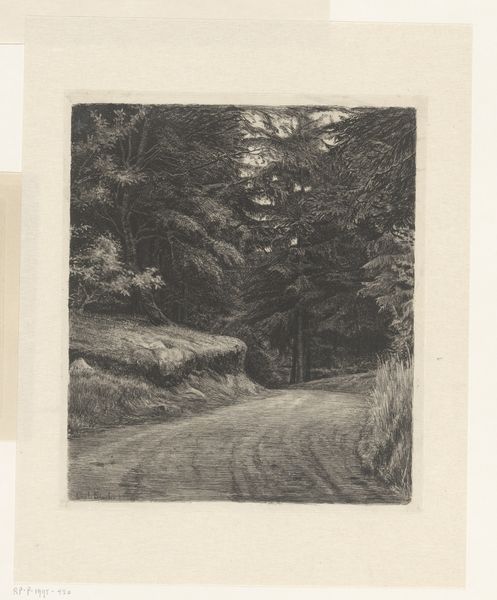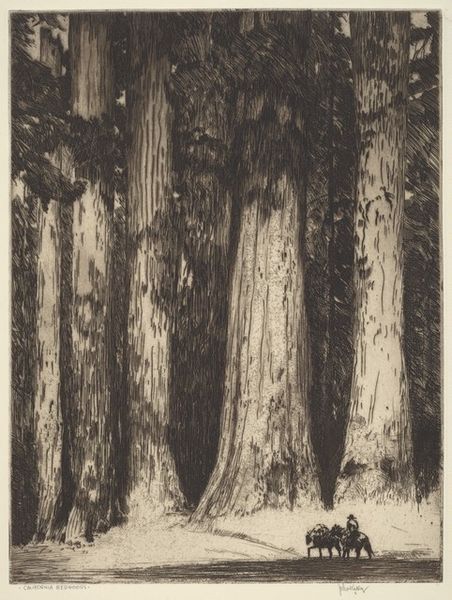
drawing, print, pencil
#
drawing
# print
#
landscape
#
pencil
#
realism
Dimensions: image: 28.42 × 41.91 cm (11 3/16 × 16 1/2 in.) sheet: 33.34 × 48.26 cm (13 1/8 × 19 in.)
Copyright: National Gallery of Art: CC0 1.0
Editor: This is "Forest Shade" by Stow Wengenroth, created in 1945. It's a drawing, or print, in pencil of a dense forest. It has a very still and quiet feeling, like the woods are holding their breath. The composition is really striking, almost claustrophobic. What do you see in this piece? Curator: The formal organization immediately draws my attention. Wengenroth manipulates light and shadow to construct depth. Note how the darkness in the foreground creates a tangible sense of spatial recession. What do you observe about the artist's use of line? Editor: Well, there's an incredible amount of detail. All the textures, from the bark on the trees to the leaves on the forest floor, seem painstakingly rendered with these very fine, short lines. It seems almost photorealistic, despite being just pencil. Curator: Indeed. And this dedication to textural detail speaks to the artist's engagement with realism, while also transcending it. Observe the compositional strategies—the calculated placement of trees, the contrast between the dark masses and the glimmering highlights. Do you believe those formal arrangements help to establish a mood, a sense of place? Editor: Yes, definitely. The density of the trees and the subtle variations in shading create an almost palpable sense of atmosphere, and an underlying sense of tension between the light and shadow, making it so dramatic. Curator: Precisely. And it's in that interplay of contrasts, in the tension between line and shade, realism and artistry, that the real value of Wengenroth's work resides. A carefully considered interplay that produces a complex and compelling landscape. Editor: That's fascinating, it’s given me a completely different way to view the picture and to decode the strategies behind what I had thought was just its immediately accessible realism. Curator: Agreed. By dissecting its formal components, we uncover a depth of meaning and an engagement with art making that enhances our appreciation of Wengenroth's skill.
Comments
No comments
Be the first to comment and join the conversation on the ultimate creative platform.
